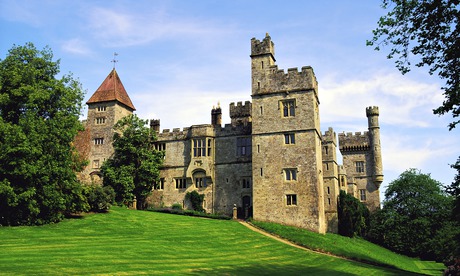
At the weekend I opened an exhibition. I’ve never opened anything like an exhibition before, and struggle even to open everyday objects (jars, tins, doors) satisfactorily, so this was a challenge. Before the ceremony the delightful director of the gallery told me that last year’s speech had been frightfully good, and only 10 minutes long.
Nevertheless, this was a spur to my making a few scribbled notes, and invoking the spirit of Edwin Morgan, since quoting his lucent and moving poem Not Marble: a Reconstruction would take at least a minute. (This poem contains one of the great descriptions of being in love, “crushed under the weight of it or elated by the hush of it”.)
The happy thing about the speech, such as it was, was that it celebrated an extremely good exhibition – The Persistence of Objects, at Lismore Castle Arts in Co Waterford, Ireland, which is curated by Katrina Brown and Kitty Anderson, of the Common Guild in Glasgow. (When a Glasgow artist makes the Turner prize shortlist, you will usually find that this remarkable pair had a hand in it.)
It includes Gerard Byrne’s beautiful photographs of the backs of paintings – a reminder that even these magical portals into worlds beyond the painted surface are workaday things made from wood and canvas. And a spectacular sculpture by the Mexican-born artist Gabriel Kuri in St Carthage’s Cathedral consisting of a skip turned on its side and balanced with a rock, facing a huge curved sheet of metal, also balanced with a rock: immense heft, poise, suspense, weight and lightness conveyed at the same time.
And oddly it seems a perfectly natural sight in the graceful old church.
A castle I could get used to
A great part of the weekend was staying in Lismore Castle itself, which is owned by the Devonshires (William and Laura Burlington of that family being the creators of the gallery in the castle grounds – some of the most beautiful gardens I have ever seen, in their fine balance between the disciplined and the wild).
I write this with trepidation in the pages of the Guardian, but it turns out that it is surprisingly easy to get used to being served astonishing food and delicious wine by a butler. I was slightly disappointed on returning to London to find that my bed hadn’t been turned down – but there’s always time to train up my partner, I suppose.
Passionate pioneer
It was my second speech of the week, as I had also launched my book on to an unsuspecting public. My favourite character in the book is Hilda Matheson, the BBC’s first head of talks in the 1920s, whose brilliance vividly comes to life through the screeds of letters she wrote to her lover, Vita Sackville-West.
Matheson – clever, passionate, charming, persuasive – invented Week in Westminster in 1929, which still runs on Radio 4 today. The idea came to her like this: one week a mid-morning “household talk” on cooking with cheese included the suggestion that listeners could write in for a recipe leaflet. Thousands (to everyone’s surprise) did, making Matheson realise that there was a good audience of women at that time of day.
So she dreamed up Week in Westminster as a way for female MPs such as Megan Lloyd George and Nancy Astor to speak about parliament for the benefit of Britain’s newly enfranchised women.

